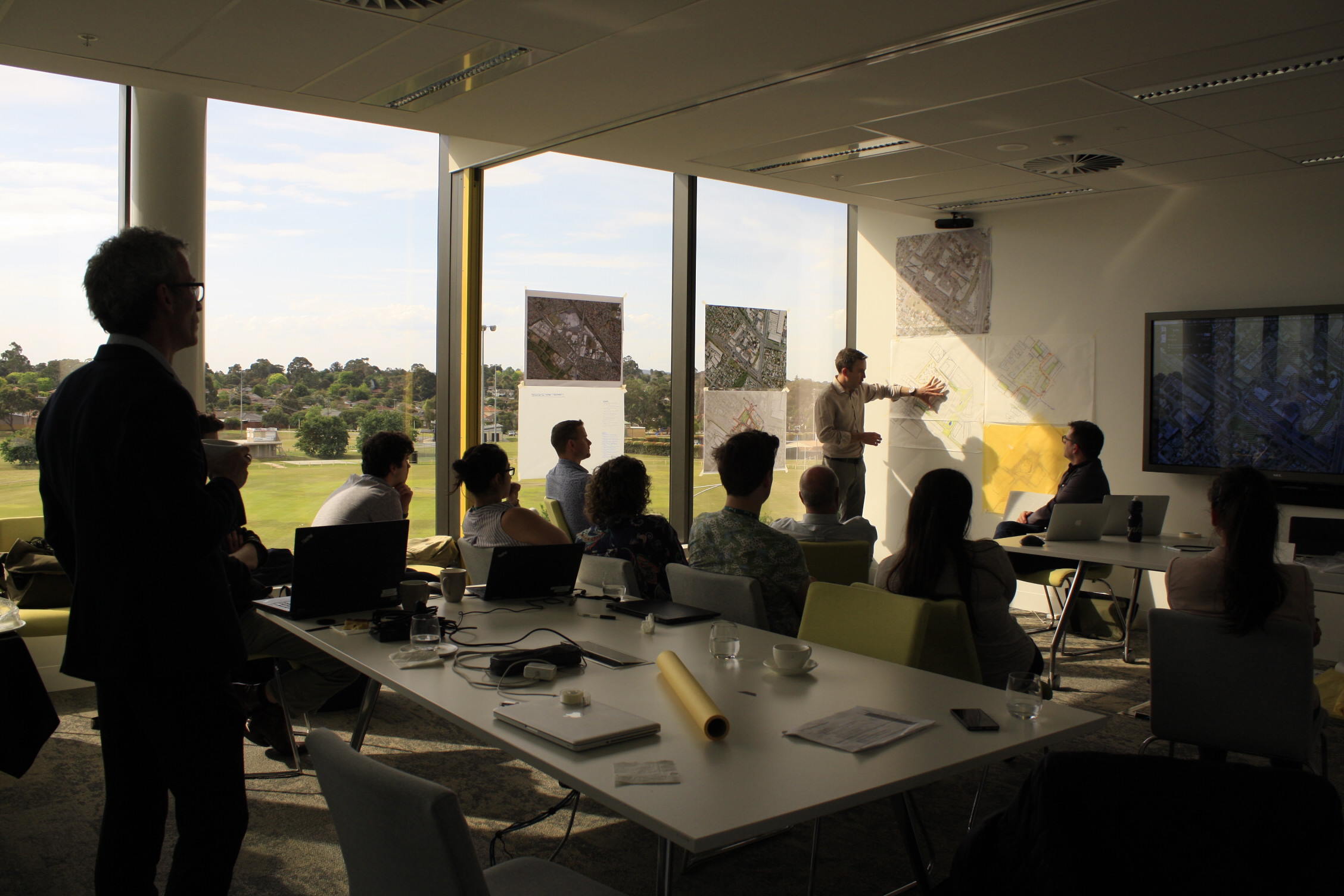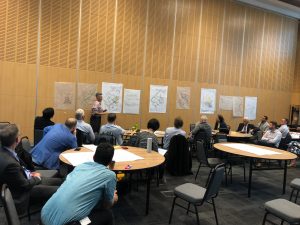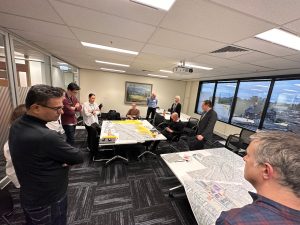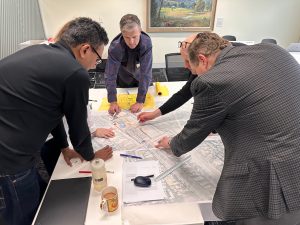
16 Jan Inquiry by Design: collaborative workshops for participation, efficiency and buy-in
Why Inquiry-by-Design?
An Inquiry-by-Design is defined as an intensive, interactive forum, over 2–4 days that aims to produce non-binding urban design and planning visions for complex projects. It brings together a technical team and a consultation group to develop a both a mutually satisfying design and a feasible implementation strategy (source: Participedia, Method: Enquiry-by-Design, https://participedia.net/method/4639)
I also think the terminology is telling – the process utilises design as the tool/process of ‘inquiry’ – it is about investigating, optioneering, testing and iterating. The outcomes are not known at the beginning, but emerge through the interaction of ideas.

Inquiry by Design Workshop led by Simon McPherson, for the Wyndham City Stadium Precinct: Integrated Strategic Plan
At Global South, we choose to use these forums in most strategic/design projects with our government clients, with great success. Inquiry by Design forum offers a range of benefits:
Time:
Focus the design and engagement/feedback activity into a short, defined periods, makes for an efficient project process.
Rapid:
IBDs support rapid development and testing of ideas, options and scenarios, through cross-disciplinary engagement.
Focus:
Participants (usually) focus solely on the project at hand, for a limited period, as a result of the group dynamic and intensive process.
Involvement:
Clients and stakeholders can be actively involved, and feel part of the process.
Informed:
The IBD draws on the (often) more extensive local knowledge of clients and stakeholders, to ensure the design outputs are informed and relevant.
Buy-in:
Stakeholder involvement and direct influence helps build their support and buy-in to the outputs.
Enjoyment:
A dynamic design workshop can be a positive, exciting and energising experience for design teams and all participants.

Inquiry by Design Workshop led by Simon McPherson, for the Mordialloc & Aspendale Level Crossing Removal: Urban Design Framework, for Kingston City Council
So, what makes a successful Inquiry by Design?
From my experience, these are some of the key steps ingredients to support an effective, successful IBD process:
Client support:
Explaining the process, approach and benefits to clients at the outset, and collaborating on the workshop details.
Venue:
Running the workshop on-site or nearby the study area, to create separation from regular workplaces, and allow greater site engagement. Ensuing a spacious, inviting setting for the Workshop to support productivity and concentration.
Planning early:
Locking in a clear and applicable workshop process, dates/times and participants, to ensure clear diaries and good participation.
Briefing clearly:
Setting and communicating the purpose and intent of the process, so all participants are aligned.
Workshop type, number, length:
Deciding the format to suit the project site, brief and objectives. I have led successful IBD’s over a single day, or even shorter preparatory forums.
Preparation workshop:
Establishing site issues, constraints and opportunities through a shorter preparation workshop, for a more detailed Brief and enhanced design team knowledge, before the main workshop.
Tight agenda:
Establishing a tight, dynamic, intensive yet manageable agenda/process, to keep participants engaged and busy throughout.
Materials:
Preparing physical and digital materials to suit the project, location, participants, process, and expected outputs.
Inviting inputs:
Encouraging all inputs, ideas and suggestions in the Workshop, without judgement, to support innovative and diverse thinking, and identification of great design initiatives.
Keep groups manageable for production:
Limiting group sizes and focussing on the design team, while containing stakeholder involvement to defined time periods during the workshop, to support productivity and focus.
Defined stakeholder review times:
Bringing in larger stakeholder and community groups at for specified period in the workshop, for presentations, feedback and discussion, while avoiding attendees that don’t have enough to do.
‘Real time’ feedback and response:
Inviting stakeholder comment/feedback during the workshop, then later showing the design response to that feedback within the same workshop.
Layered working:
Inviting specialists to develop design work for different locations and/or varied disciplines/themes, in parallel, followed by integration of these layers.

Inquiry by Design Workshop led by Simon McPherson, for the Mordialloc & Aspendale Level Crossing Removal: Urban Design Framework, for Kingston City Council
What other elements contribute to effective design collaboration and participatory workshops, in your experience?

